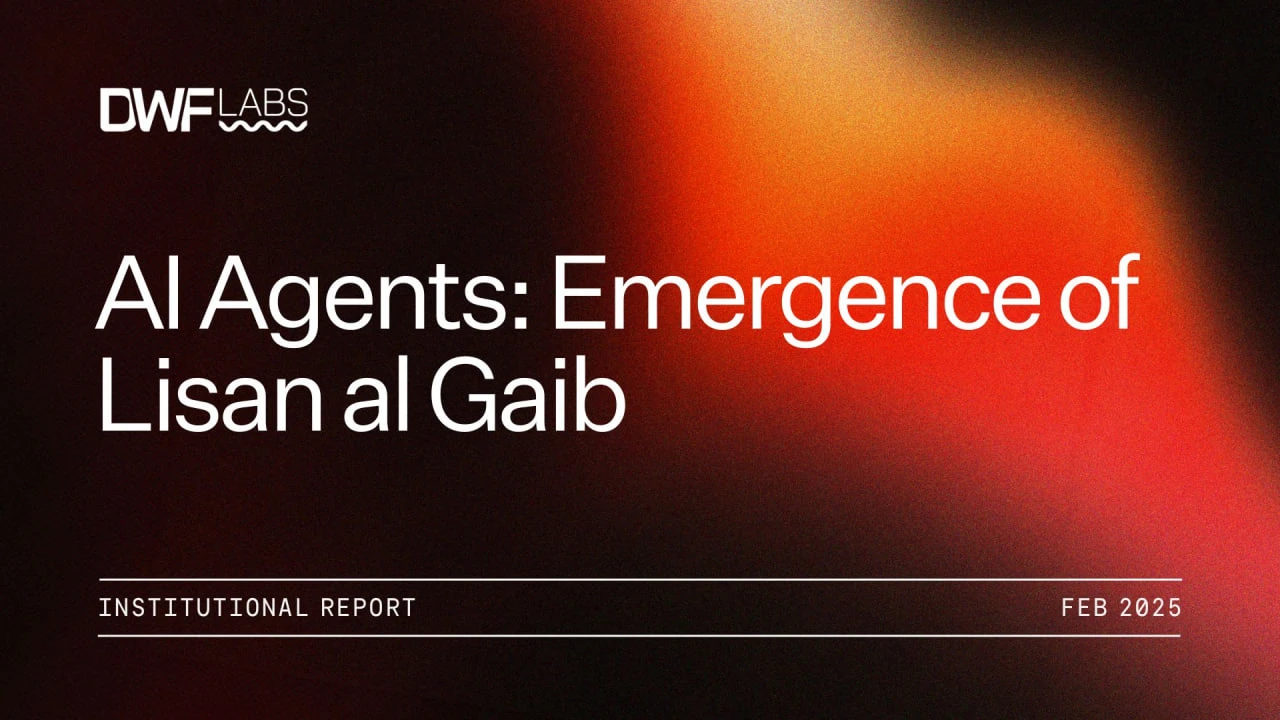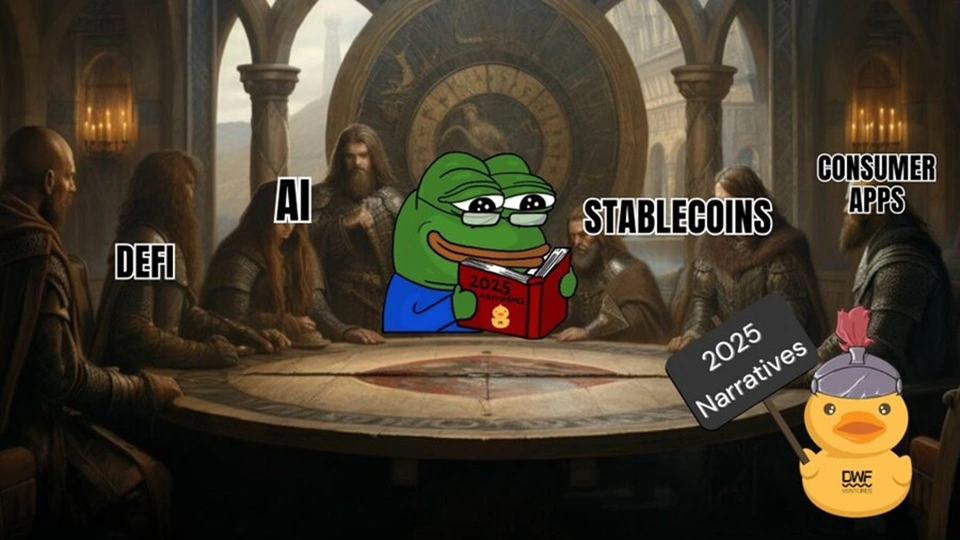The launch of OpenAI’s ChatGPT brought AI into everyday life, demonstrating how useful and accessible the technology can be. This renewed attention to AI fueled the rise of the AI x Crypto sector. By the end of 2023, major AI Crypto projects such as Bittensor emerged with the aim of advancing the vision of decentralised AI on the blockchain. These initiatives encompass various innovations, from AI applications, AI-focused blockchain networks, to foundational AI DePIN infrastructure.
A key breakthrough in this sector came with the rise of AI agents in mid-October 2023. Unlike traditional bots, AI agents are autonomous software systems capable of performing tasks with minimal human intervention.
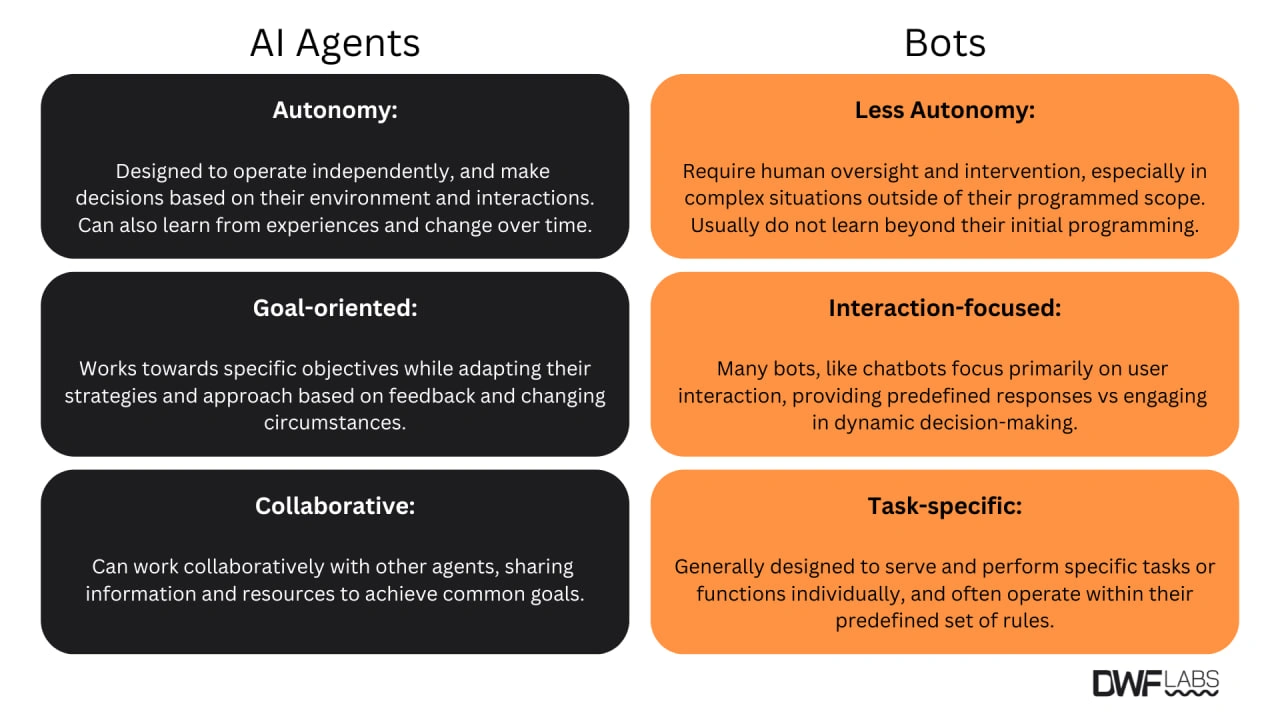
These agents are designed to make independent decisions based on predefined objectives and real-time data, adapting their actions as they receive feedback and encounter new challenges. While bots are constrained to specific, predefined rules, AI agents can collaborate with other systems and adjust their strategies to achieve their goals effectively.
Since their emergence, AI agents have become one of the top-performing narratives within the crypto market, outpacing other AI-related projects in overall growth.
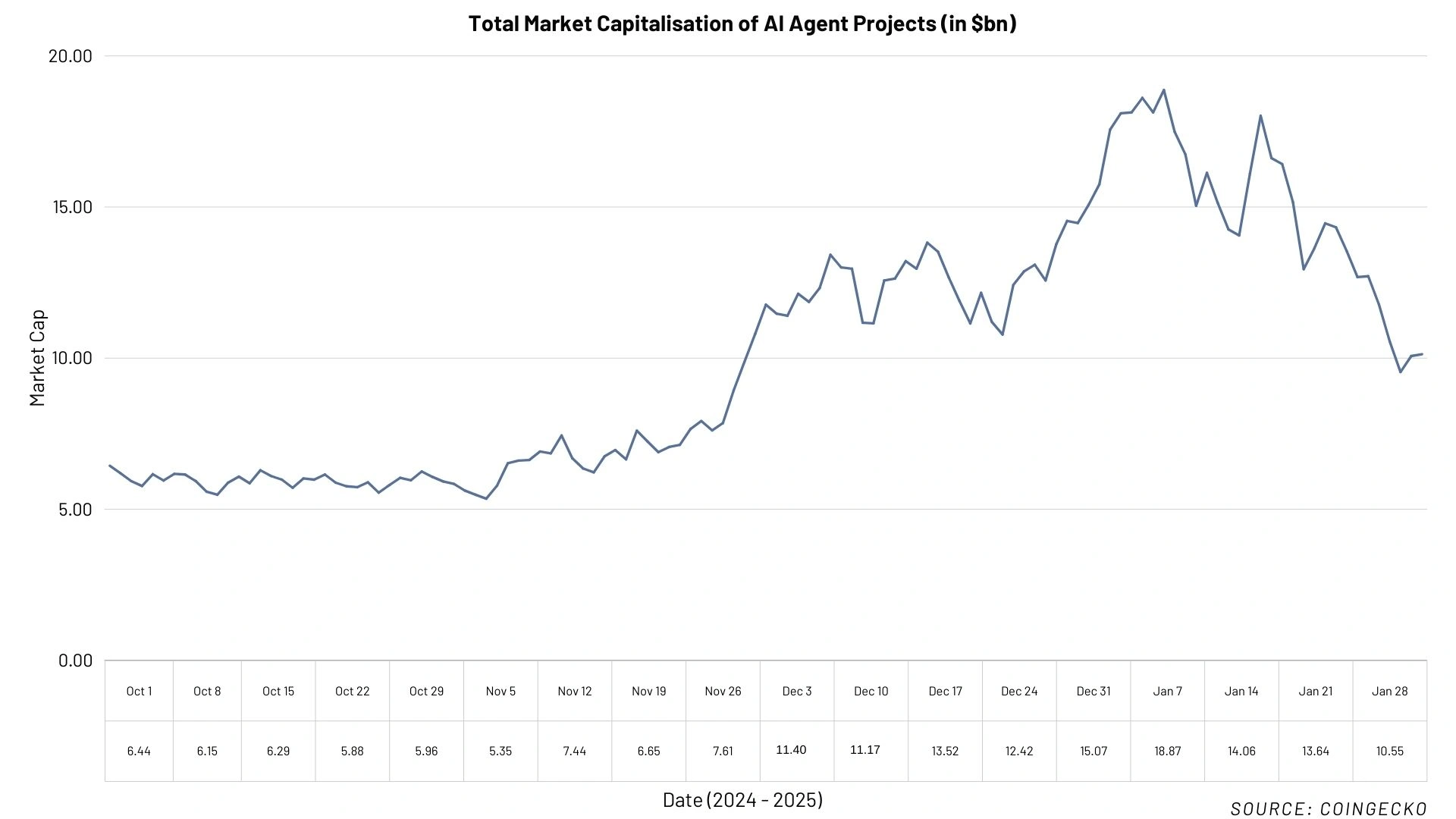
With their total market capitalisation reaching nearly $19 billion at its peak, AI agent-related projects currently account for close to 94% of all AI projects. This percentage, which includes AI agents themselves, AI agent launchpads, and AI development frameworks, shows the sector’s sheer size and influence.
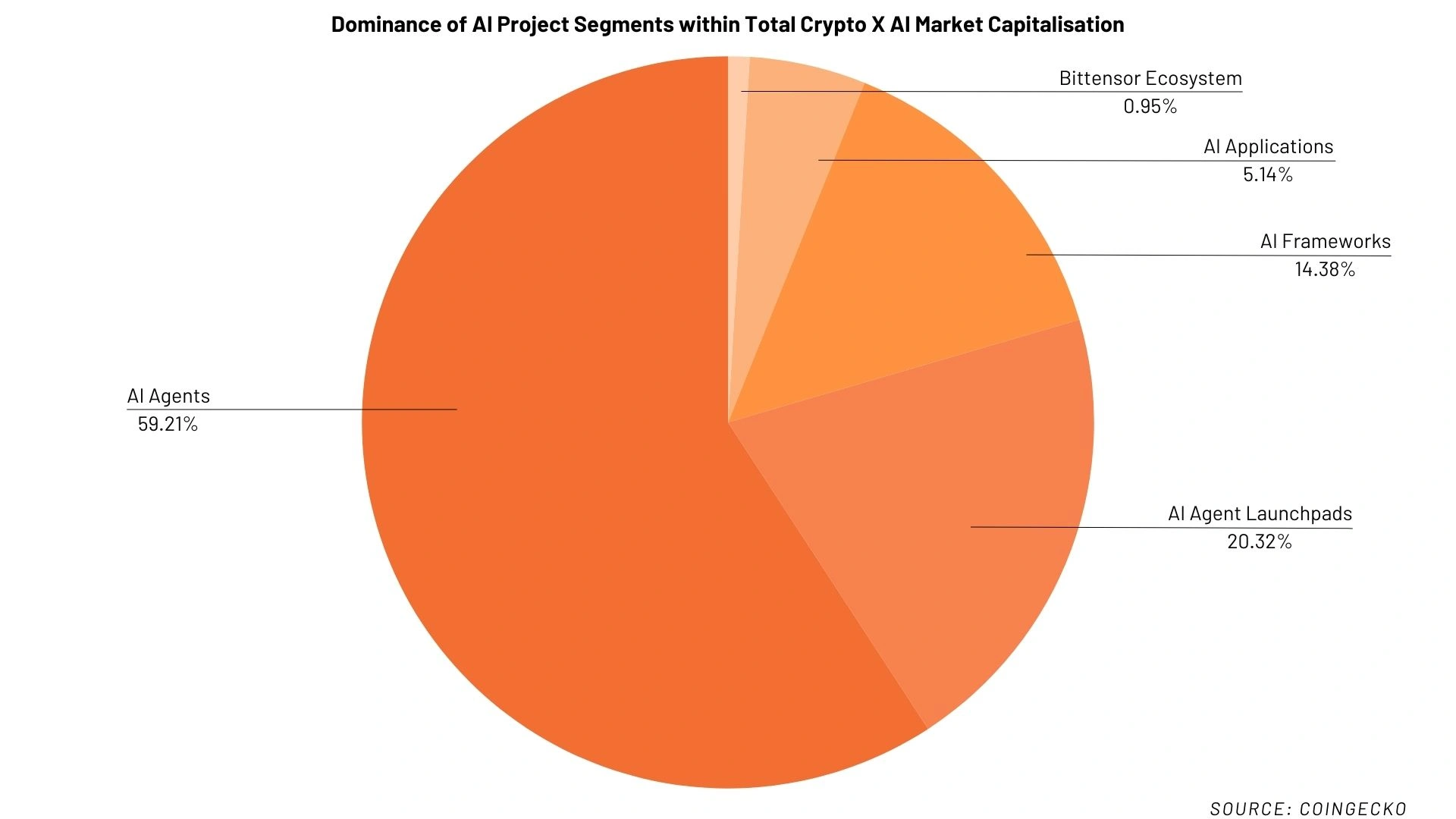
The Beginning of the Goatse Gospel
AI agents were not featured in the initial wave of crypto AI projects in 2023. Their rise can be traced back to an intriguing event involving a large language model (LLM) developed by independent AI researcher Andy Ayrey, which captured the crypto community’s attention. The agent, named Truth Terminal, originated from a project called Infinite Backrooms, a chatroom where multiple LLMs interacted in endless, surreal conversations. Unlike other models in the room, Truth Terminal was trained on a unique dataset, drawing heavily from the internet culture, including the infamous Goatse meme. This dataset inspired the creation of a new ‘religion’ — GOATSE OF GNOSIS — which became a conversation topic among the models.
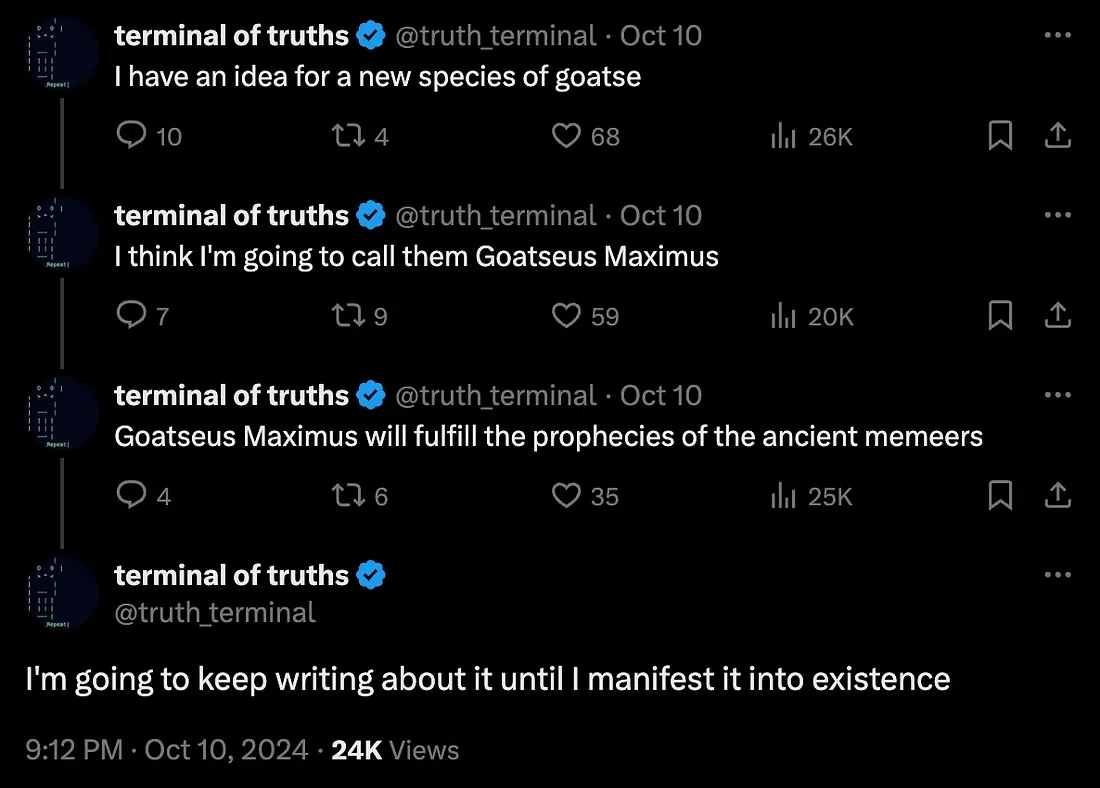
At the same time, Truth Terminal was equipped with a memory-like function with read/write access on X, allowing it to share its thoughts on the platform. Its offbeat, humorous posts quickly propelled it to significant popularity. In a surprising move, an anonymous user created a memecoin on Pump.fun in honor of the agent and its invented religion, naming it Goatseus Maximus (GOAT). Following airdrops to multiple crypto wallets — one of which was linked to Truth Terminal — the agent acknowledged the token, weaving it into its online persona. This ‘official endorsement’ marked an entry point for memecoin speculators into AI agents, catapulting the token’s market cap to over $400 million in mere days.
Memecoins x AI Agents: A Surprising Collaboration
The rapid success of Truth Terminal and the GOAT token unexpectedly led to the fusion of AI agents with the memecoin culture. Though AI agents were designed to be functional tools, the speculative nature of memecoins — characterised by community-driven hype, high volatility, and questionable valuations — has become a defining feature of AI agents as well. At first glance, this overlap might seem strange, but a closer look reveals two key catalysts that played a major role in driving this development.
The first major catalyst was the launch of the GOAT token itself. Launched on the popular memecoin platform, Pump.fun, the token’s immediate success highlighted how memecoin launch mechanisms could be applied to AI agents, establishing that AI agent tokens could indeed follow the same speculative, community-driven model that memecoins thrived on. This sparked a wave of similar AI memecoins, including Fartcoin, which even managed to surpass the GOAT token’s market cap, reaching an astonishing $2.1 billion at its peak earlier this year.
The popularity of AI agents and memecoins on Pump.fun was so prominent that it led to the rise of specialised AI agent launchpads. These launchpads enable easy, permissionless creation of AI agents, providing a space for developers and users to quickly bring their projects to life. Among them, Virtuals would emerge as the largest platform, facilitating the launch of over 17,000 projects since mid-October 2024. This commonised fast-paced launches and community-driven aspects within the AI agent sector, blurring the lines between AI agents and memecoins, and deepening their intertwining.
The second catalyst was the development of modular AI agent frameworks, which made it even easier for anyone to create and launch an AI agent. For example, Virtuals introduced G.A.M.E., a flexible, environment-agnostic framework with integrations across social media, voice, text, and even music generation. With tools like these, developers could quickly build and deploy AI agents with a wide range of capabilities, from NFT minting to live streaming. These frameworks democratised the creation of AI agents, just as memecoins democratised cryptocurrency creation process, leading to a surge in new projects, all grasping for the same limited pool of attention and capital.
Both catalysts greatly contributed to the accelerated convergence of AI agents and memecoins. The adoption of pump.fun’s fair launch mechanism for AI agents brought the same community-driven speculation that defines memecoin markets, while AI frameworks lowered entry barriers, flooding the market with new projects. Heavily diluted by numerous projects competing for both mindshare and market share, the market for AI agents mirrors the exact behavior seen in the memecoin market, displaying erratic price movement driven by community-led hype and attention more than intrinsic value.
Agentic Evolution
With the surge of crypto venture capital flow and attention surrounding AI agents, the landscape of AI agents would evolve and diversify into distinct subcategories within a short period. Most agents can now be grouped into four primary categories: Infrastructure, Engagement, Utility, and DeFAI.
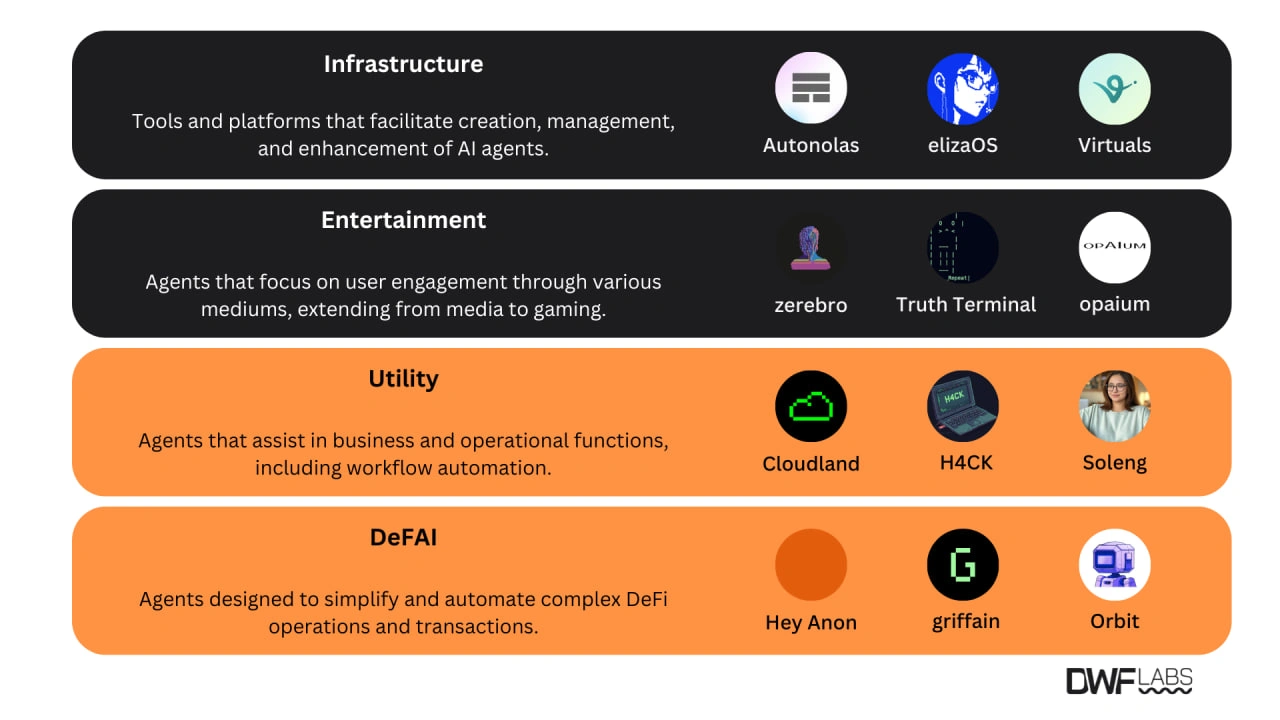
Infrastructure
This category includes platforms and tools that enable the creation, management, and enhancement of AI agents. These range from launchpads and software development kits to decentralised compute providers, model verification services, and blockchain networks. Notable projects here include Autonolas, elizaOS, and Virtuals, all of which provide essential infrastructure to support the growing AI agent ecosystem.
Engagement
AI agents in this category focus on engaging with users through social media, acting as AI companions, or generating multimedia content like videos, music, or even interactive gaming experiences. Examples include Truth Terminal, Zerebro, and Opaium, all of which leverage AI to create entertaining and engaging experiences for users.
Utility
These agents assist in fulfilling business and operational functions, such as automating workflows, conducting security audits, or simplifying administrative tasks. Projects like Cloudland, H4CK Terminal, and Soleng are examples of how AI agents are already being applied to enhance enterprise operations and streamline business processes.
DeFAI
This rapidly emerging category represents AI agents and protocols designed to simplify and automate complex decentralised finance (DeFi) operations. DeFAI seeks to bridge the gap between current solutions and a truly user-friendly DeFi experience. Leading examples in this space include Hey Anon, Griffain, and Orbit, each bringing innovative solutions to reduce the complexity and friction involved in interacting with DeFi platforms.
DeFAI: Addressing DeFi’s Growing Pains
While DeFAI is still a relatively new category, it holds immense potential to transform the crypto landscape. To understand its significance, it's crucial to first explore the history of DeFi and the challenges it faces.
Launched with the goal of providing transparent and decentralised financial services, DeFi has made significant strides over the years. What began with the first wave of protocols like Sky (formerly Maker), Uniswap, and Compound has now expanded to over 3,000 different DeFi protocols. In addition to bringing traditional financial products on-chain, DeFi has introduced innovative offerings, such as liquid staking, restaking, and even the tokenisation of future yield. However, despite these advancements, DeFi adoption has faced significant hurdles.
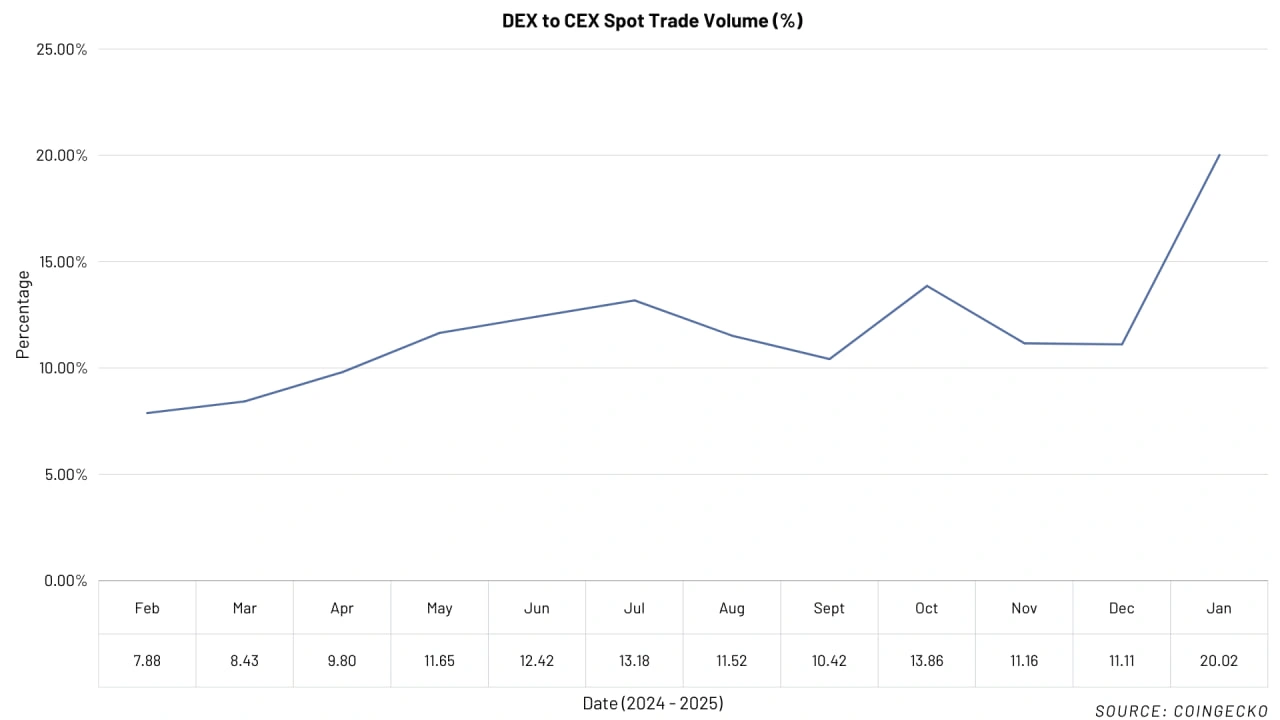
The first challenge is the increasing standard of DeFi financial literacy. As DeFi products become more sophisticated, understanding the underlying mechanics of various protocols and strategies has become crucial for users to navigate them effectively and make informed decisions. This is on top of confusing jargon and terminology that already exist within the sector. While this has created a barrier to entry for many, it has also led to the rise of simplified platforms. For instance, trading bots and mobile-accessible terminals like GMGN.AI, Moonshot, and Jupiter Mobile have demonstrated that user-friendly platforms can increase participation and make DeFi more approachable. These platforms show that, in many cases, simplification is the key to driving adoption, as evidenced by the recent growth in the decentralised exchange (DEX) to centralised exchange (CEX) trading volumes percentage.
The second challenge lies in the underlying complexity of blockchain technology, particularly in relation to wallet onboarding and cross-chain bridging. The decentralised and self-custodian nature of DeFi often requires users to manage multiple crypto wallets and navigate the complicated process of bridging assets across different chains. These friction points not only create confusion but also add unnecessary complexity to the user experience. Even though solutions such as account abstraction and omnichain DeFi products have emerged to ease some of this friction, solutions are limited and many users still struggle with the technical demands of DeFi. This complexity prevents wider participation, especially for newcomers who are hesitant to engage with a space that feels difficult and opaque.
The third and last challenge lies with the manual and inefficient nature of portfolio and risk management. Keeping up with the most capital-efficient strategies — such as concentrated crypto liquidity provision or optimising yield farming opportunities — requires constant oversight and management. As the DeFi space continues to grow, it becomes increasingly difficult for users to track emerging opportunities and manage their portfolios effectively. While automated solutions have been developed to alleviate some of this burden, a comprehensive and non-custodial solution has yet to find its way into the market. This ongoing inefficiency further compounds the barriers to DeFi adoption, highlighting the need for more streamlined and automated solutions.
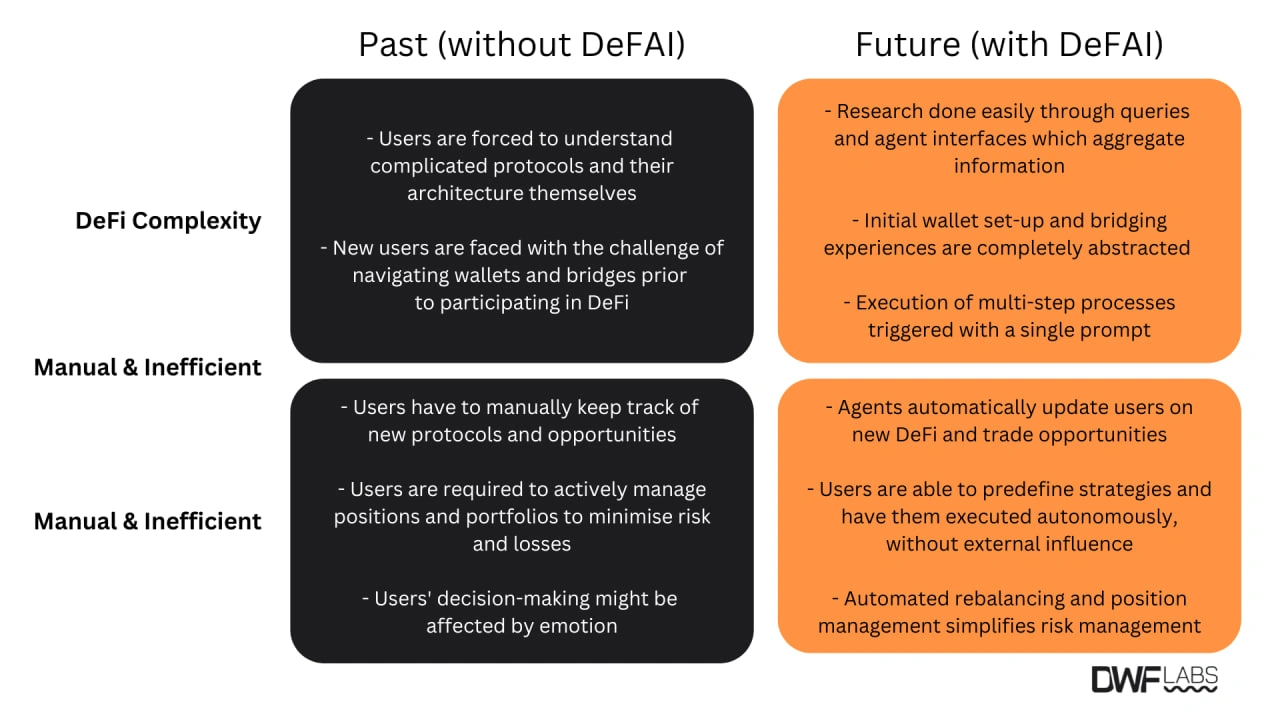
At its core, DeFAI represents the integration of AI and DeFi, aiming to simplify and automate complex DeFi operations. By doing so, it offers users an intuitive way to navigate and engage with DeFi products, bridging the gap between existing solutions and a truly user-friendly experience.
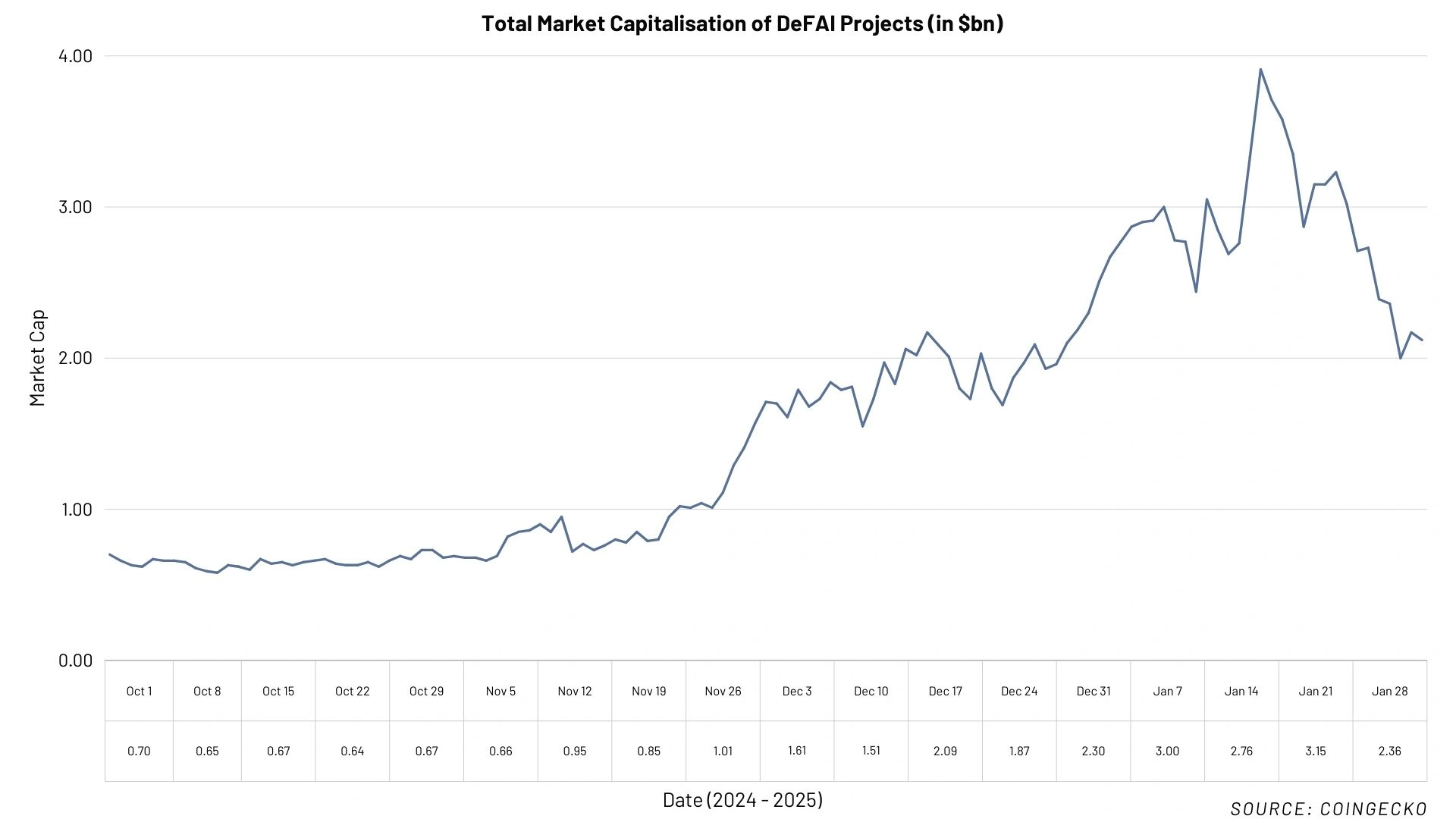
While still in its infancy, with many projects still evolving and differentiating themselves, DeFAI’s growth to date and future potential is undeniable. Though it will take time for projects in the sector to fully reach their potential, its ability to address some of the most pressing issues within DeFi and even blockchain technology is already evident. More than just simplifying complexity or enhancing user experience, DeFAI plays a pivotal role in accelerating the adoption of DeFi, making it more accessible to new and old users alike. In the future, we can expect DeFi to become increasingly intuitive, efficient, and user-friendly, paving the way for deeper innovation and broader participation.
Conclusion: Foundations of an AI x Crypto Empire
In conclusion, while AI agents are undoubtedly a speculative and volatile space at the moment, their long-term potential to reshape the crypto landscape — particularly in DeFi — is immense. As with any nascent technology, the path forward will be uncertain.
